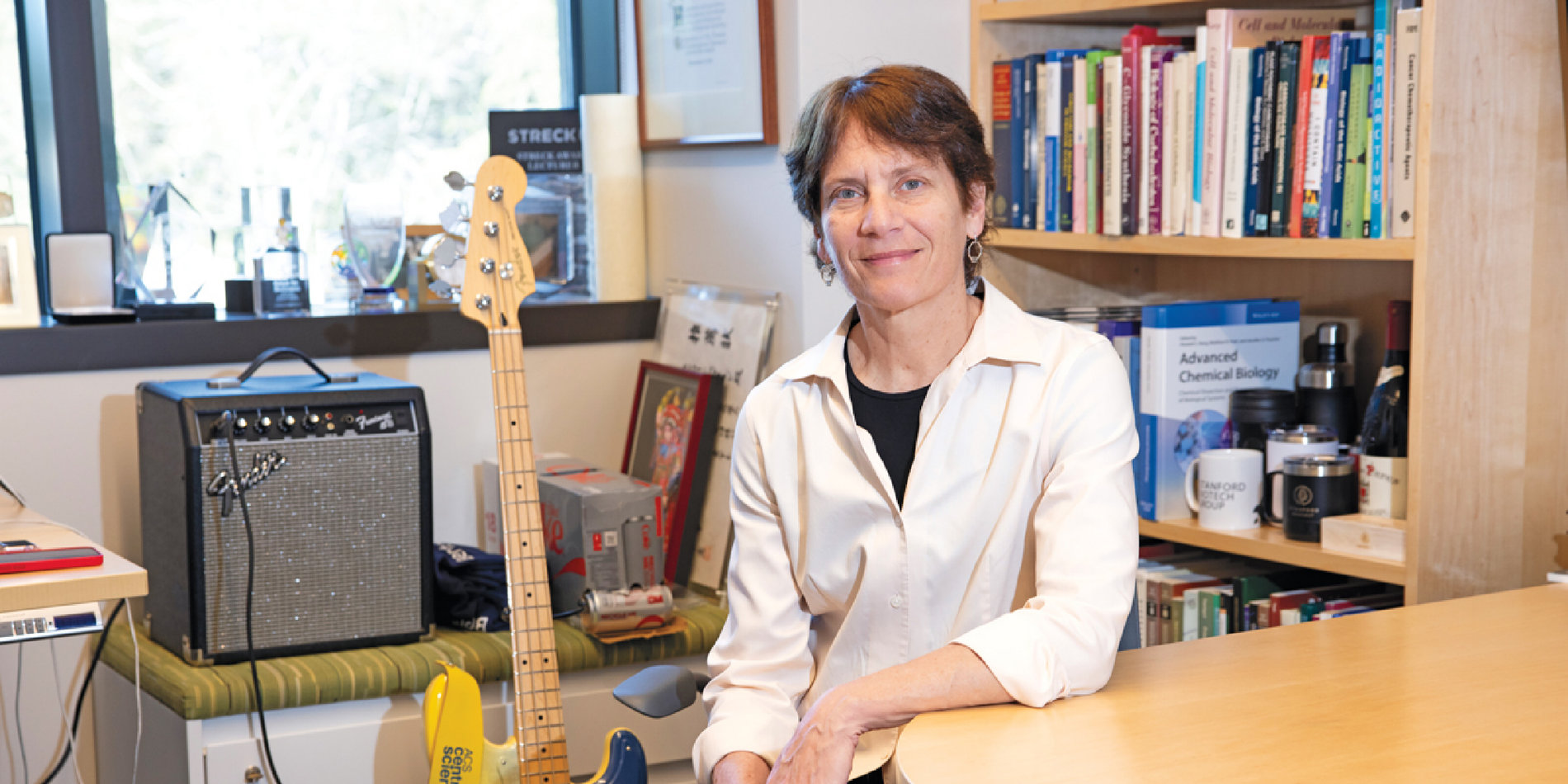Targeting a human protein prevents SARS-CoV-2 infection in mice
This story originally appeared in the 20/20 Blog.
The most common strategy for beating the coronavirus is attacking the viral proteins responsible for disease, but new research reveals that a complementary strategy, targeting a human protein that interacts with the virus, could be a promising alternate solution. The Stanford team, working with collaborators at the University of Iowa, found that they could repurpose an existing oral drug to prevent COVID-19 disease in mice.
Vinit Mahajan M.D., Ph.D., Vice-Chair for Research in the department of ophthalmology at Stanford, focused on a protein that is used by SARS-CoV-2 to infect cells. The protein, called TMPRSS2, is found on cells in the nose and. “Our hypothesis was that if we could block this protein, it would prevent the virus from infecting cells,” said Mahajan.
Using innovative software created in the lab, they found proteins very similar to the three-dimensional protein shape of TMPRSS2, bypassing the conventional approach of using genetic information to find similarities.
Gabriel Velez, a graduate student in Mahajan’s lab, said, “Our software allowed us to match up proteins with existing drugs to our target protein, human TMPRSS2. This is a strategy we think can be applied to finding other drugs for many different diseases.”
Based on their expertise in protein structure and drug development for proteases, the lab was optimistic about this approach. Dylan Parsons, a postdoctoral fellow and medicinal chemist, found ninety potential inhibitors and looked for drug-target interactions using high powered computer simulations he could run from home.
Young Joo Sun, a postdoctoral fellow and lead author of the study, then developed an enzymatic assay to see if any of the drugs blocked TMPRSS2.
He said, “Doing hands-on work in lab was a real challenge because of the COVID restrictions. It meant coming to lab in the middle of the night and on weekends to rapidly develop the tests, but it was incredibly exciting to find that some of the molecules we predicted in computer modeling actually worked in the test tube.”
The next step was to test the drugs in human cells and mice infected with the authentic SARS-CoV-2 virus, but Stanford does not have the required facilities to work with dangerous viruses. Mahajan turned to his colleagues at the University of Iowa, Alexander Bassuk M.D., Ph.D. and Paul McCray, M.D., Ph.D., professors of pediatrics with expertise and facilities actively infecting cells and mice with SARS-CoV-2.
Bassuk said, “I knew that McCray’s research team had just created a humanized mouse that could be infected with SARS-CoV-2. The lack of an animal model had been an early roadblock for drug development.”
McCray said, “We had several people asking us to test different drugs in our mouse model, but Mahajan’s approach was really unique and interesting, especially since it was targeting a host protein rather than a virus.”
While Bassuk’s team showed that one drug in particular, Avoralstat, prevented TMPRSS2 activity in cells, McCray’s team confirmed that Avoralstat could limit SARS-CoV-2 infection in human lung epithelial cells and in mice. What was remarkable was that the drug also prevented mice from losing weight – an indication of COVID illness in mice.
Avoralstat is an oral medication previously tested in humans for hereditary angioedema and was generally safe. The drug can be stored and shipped at room temperature, making it easily accessible, especially in countries where complex delivery and storage freezers are not available.
Sun said, “Avoralstat seems to turn off part of the human protein so a cell can’t accept the virus protein. The virus spike protein is like a key that can’t find a lock. Blocking the human protein in this way did not have significant side effects. It is possible that this approach may also be effective against viral mutants, and those experiments are in progress.”
The findings are important because the vast majority of research studies have not demonstrated that their new drug works against a human protein in animal models. They are either studies in a test tube or petri dish. In some cases, human trials are started without strong evidence of efficacy because of the urgency to find new treatments.
Sun added, “TMPRSS2 is used by other viruses like influenza. So, blocking this human protein might also be effective for other viral diseases.”
The team is now looking carefully at how to optimize drugs that specifically target TMPRSS2.
“The first doctor to identify an emerging pandemic was an ophthalmologist in China, and he was one of the early deaths due to COVID,” Mahajan said. “This disease is very personal to our community of eye surgeons. Lab members have worked tirelessly in pursuit of a SARS-CoV-2 treatment that could eventually benefit both patients and essential workers who put themselves at risk every day.”
Funding for this study was supported by Stanford ChEM-H and the Stanford Ophthalmology Department.
The manuscript “Structure-based phylogeny identifies Avoralstat as a TMPRSS2 inhibitor that prevents SARS-CoV-2 infection in mice” was published in The Journal of Clinical Investigation.
Co-authors include: Young Joo Sun, Gabriel Velez, Dylan Parsons, Kun Li, Miguel Ortiz, Shaunik Sharma, Paul B. McCray Jr., Alexander G. Bassuk, Vinit B. Mahajan.




